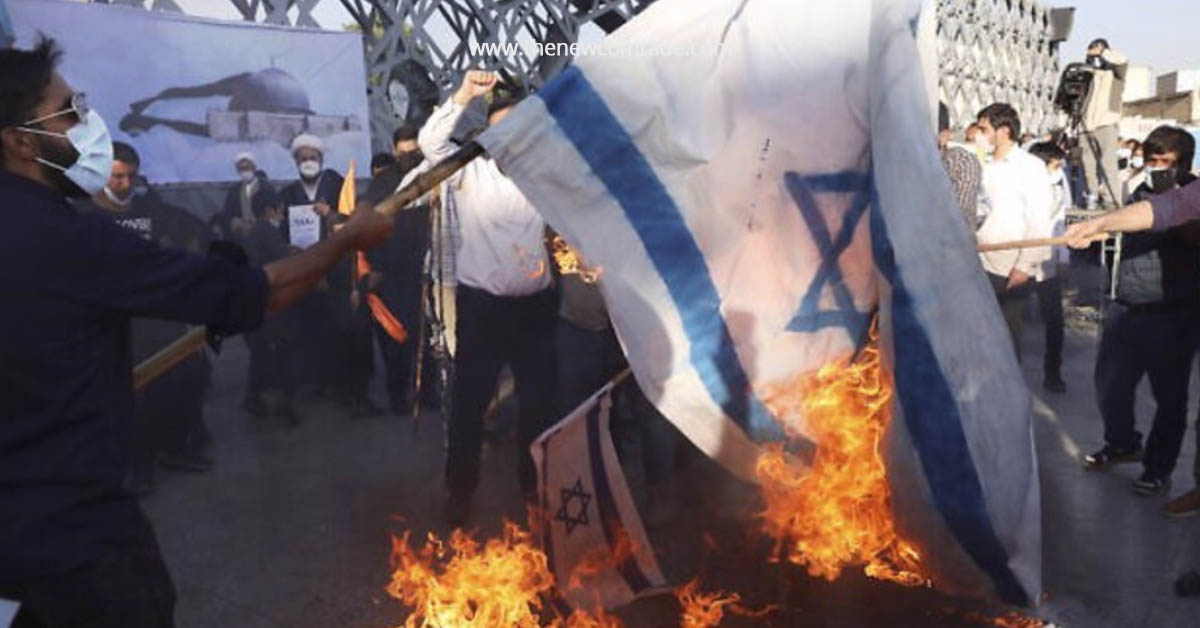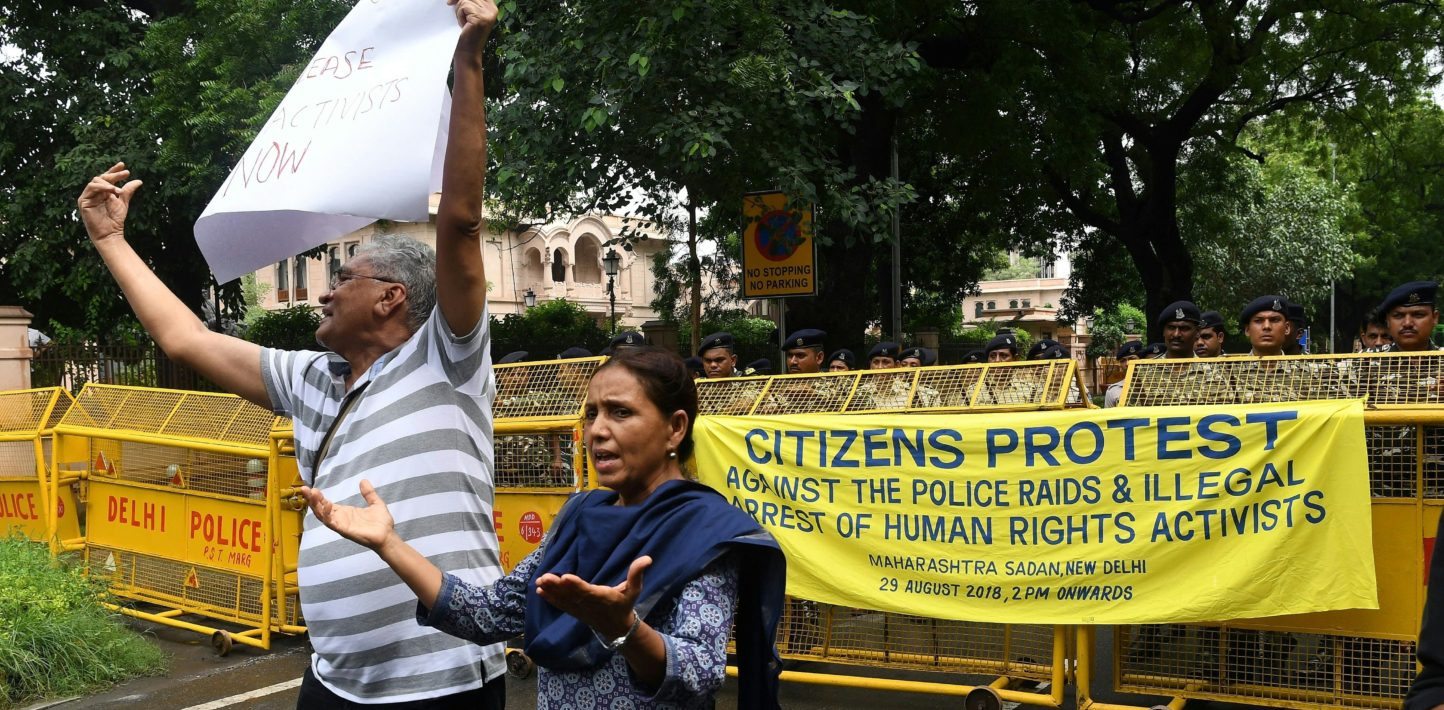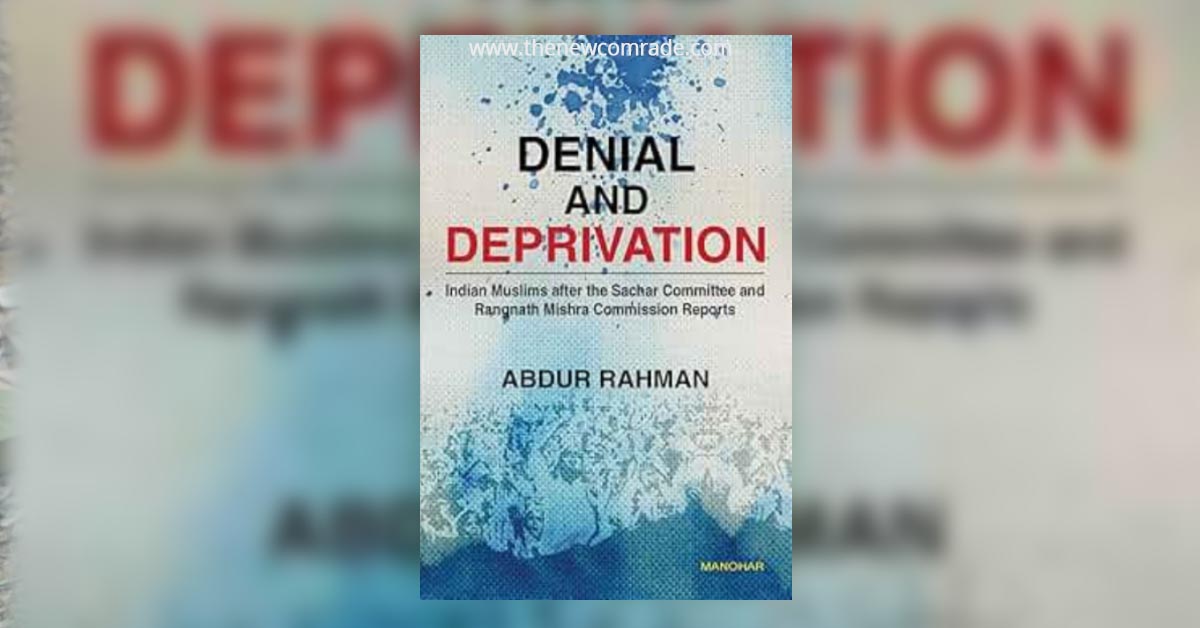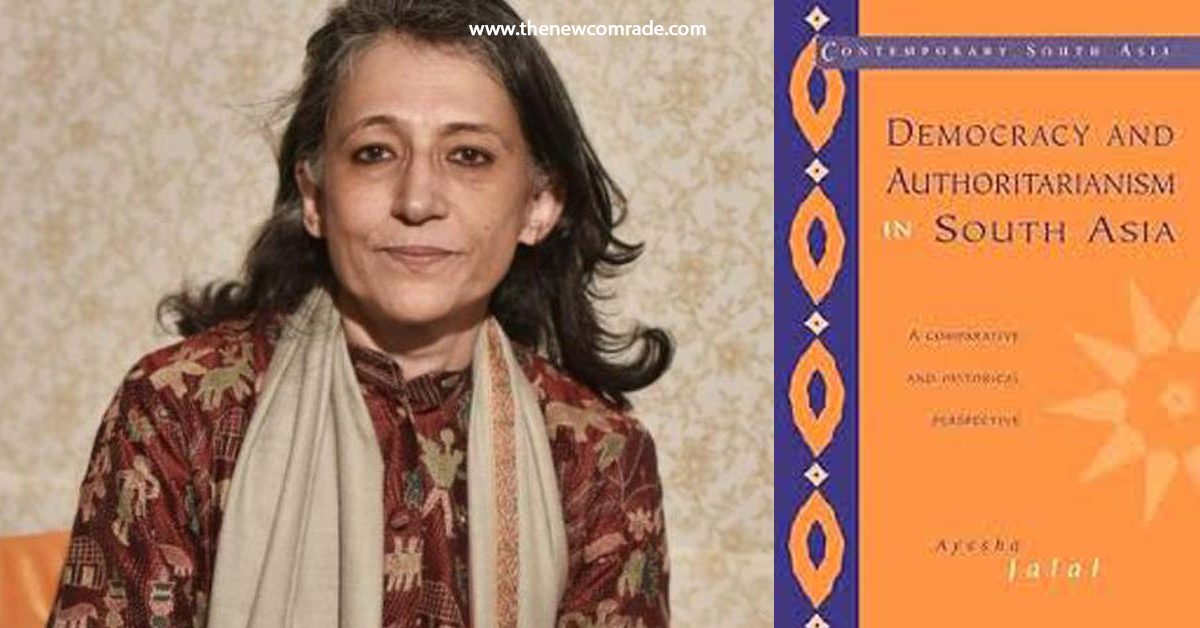In the shadowed valleys of Bethlehem and the besieged streets of Gaza—where ancient histories mingle with the cries of today’s displaced—Alan Dershowitz’s War Against the Jews: How to End Hamas Barbarism arrives like a thunderclap. Published mere weeks after the October 7, 2023 assaults that claimed over 1,200 Israeli lives and shattered communities from kibbutzim to music festivals, the book is no detached academic treatise. It is a clarion call: a legal brief fused with moral fury, penned by a Harvard emeritus professor and lifelong Zionist who has defended Israel in courtrooms and op-eds for decades.
Dershowitz frames the attacks not as a tactical skirmish but as the deadliest day for Jews since the Holocaust—a “pogrom” rooted in genocidal antisemitism, demanding not ceasefires but total eradication of the threat. His words burn with urgency: “On October 7, 2023, more Jews were murdered in any one day since the Holocaust…”
For Palestinian Christians and Muslims—descended from communities whose presence in the Holy Land predates modern nationalisms, whose forebears lived under diverse rulers—this narrative provokes profound ambivalence. While unequivocally condemning the heinous acts of violence against Israeli civilians on October 7th and acknowledging the deep trauma inflicted, a universalist human rights perspective compels us to examine the narrative’s blind spots.
For all its rhetorical power, Dershowitz’s narrative constructs a fortress of exclusion, where Palestinian voices—especially Muslim and Christian voices—are not merely marginalized but rendered spectral. This critique, grounded in universal human rights and a just peace, seeks not to diminish Jewish trauma but to insist on a fuller truth: peace in the Holy Land requires recognizing all peoples as bearers of equal dignity, not pawns in an eternal “war against the Jews.”
This review unfolds in six sections, mirroring the book’s structure while incorporating a Palestinian Muslim and Christian hermeneutic. It exposes the erasure of Palestinian humanity, examines legal and moral distortions, interrogates the weaponization of accusations, scrutinizes deterrence logic, laments moral asymmetry, and concludes with an ethical call for solidarity. Drawing on historical testimony and contemporary demands for justice, we would argue that Dershowitz’s vision risks perpetuating a cycle of suffering that binds both peoples to unending tragedy.
The Erasure of Palestinian Humanity and Narrative: Beyond the October 7 Horizon
Dershowitz’s thesis pivots on October 7 as an “epochal event,” a rupture exposing a timeless “war against the Jews” orchestrated by Hamas’s ideology. He likens it to Kristallnacht, arguing the attacks targeted Jews as Jews, not soldiers or settlers, thereby rendering negotiation futile and revealing a “judenrein” Gaza as the true aim.
This framing—capturing the visceral terror documented in survivor testimonies—commits a cardinal omission: it severs October 7 from its deep roots in Palestinian dispossession and the sustained denial of fundamental human rights.
For Palestinian Christians and Muslims, whose population is dwindling for multiple reasons including political and economic duress, the conflict is no abstract ideological battle but a lived experience of occupation, displacement, and fragmentation. The Nakba of 1948 displaced hundreds of thousands of Palestinians—including Christians—scattering families whose descendants still hold legal and historical claims to their lands. The 1967 occupation of the West Bank, Gaza, and East Jerusalem subjected millions to military rule, land confiscation, and settlement expansion. In Bethlehem, the separation wall—ruled illegal by the International Court of Justice in 2004—encircles agricultural lands and isolates neighbourhoods.
Dershowitz dismisses “colonial” labels as myths, portraying Jewish migration since the 1880s as a refuge-seeking project. While historically accurate in part, this narrative disregards the colonial frameworks embedded in the Balfour Declaration and the geopolitical dynamics of the Mandate period. It also overlooks the demographic inequities in the UN Partition Plan, which allocated disproportionate land to the Jewish state despite Palestinians comprising the majority population.
International human rights organizations such as Human Rights Watch and Amnesty International have documented systemic inequalities—including dual legal systems, restricted movement, and discriminatory access to resources—and described them as features of apartheid. Dershowitz rejects such labels as biased, yet for Palestinians they reflect daily realities of structural subjugation.
By reframing legitimate grievances as mere “pretexts” for genocidal hatred, Dershowitz denies Palestinian agency and humanity, portraying Palestinians as immutable threats rather than a people with genuine aspirations for self-determination. This essentializes an entire population and obscures the context in which despair and resistance—violent or otherwise—emerge.
For Palestinians, October 7, 2023—although abhorrent—did not occur in a vacuum. It is intertwined with sixteen years of blockade, dire humanitarian conditions, soaring unemployment, and pervasive hopelessness. This pre-October 7 period was not a state of peace, but one of ongoing Israeli aggression, control, and systemic human rights abuses that created an unbearable living situation and laid the groundwork for future escalations. Dershowitz’s ahistorical lens, while protective of Jewish suffering, obscures these human rights concerns and hampers any path toward a just and lasting peace.
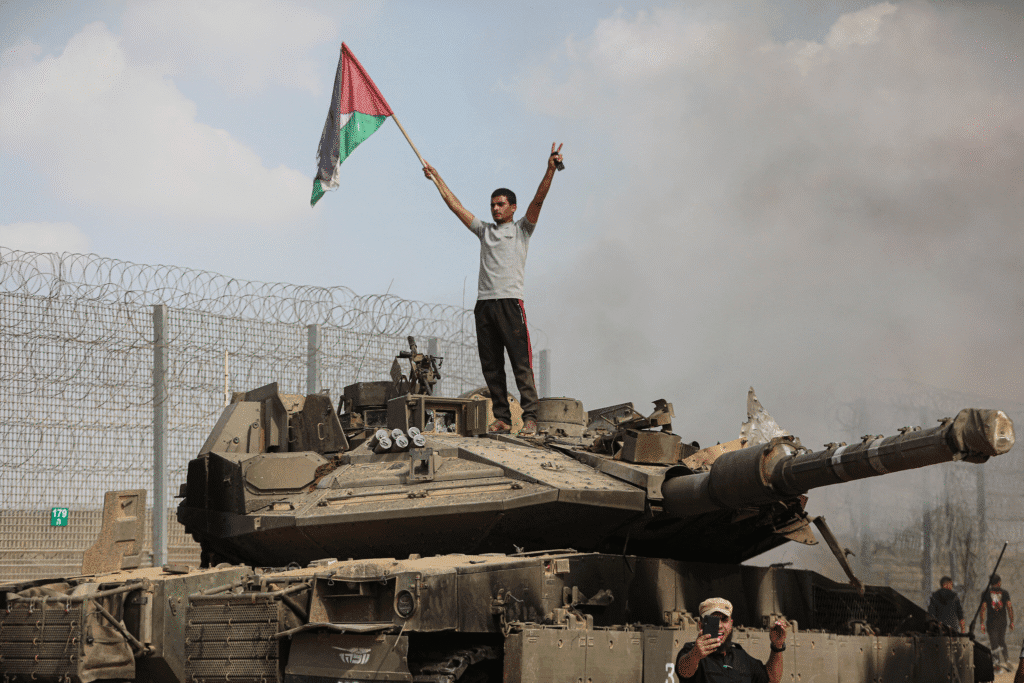
Unpacking Proportionality, Human Shields, and the Continuum of Culpability
Dershowitz’s legal and moral framework raises profound concerns when examined through universal human rights principles and the lived experiences of Palestinians.
Dershowitz correctly states that proportionality does not require parity in casualties but demands that anticipated civilian harm must not be excessive in relation to military advantage. Yet the scale of Palestinian civilian casualties in Gaza—entire residential blocks flattened, refugee camps bombed, thousands of children killed—compels a critical reassessment of the claim that “every precaution” is being taken. Reports from human rights organizations, and even preliminary findings from international bodies, raise serious questions about target selection, intelligence accuracy, and adherence to the principle of distinction—the obligation to differentiate between combatants and civilians. Warnings via leaflets or calls cannot ensure safety for a besieged population with no viable refuge.
Dershowitz’s proposed “continuum of civilianality”—meant to distinguish between innocent civilians and those who “actively support” Hamas—is particularly troubling. In besieged or occupied territories, distinctions between coerced survival, passive compliance, and active support are blurred. Does voting for Hamas under duress, or receiving services from the only governing authority, constitute culpability? This framework risks expanding legitimate target categories, potentially justifying collective punishment and obscuring civilian innocence.
The “CNN strategy”—Hamas’s grotesque use of human shields—does not absolve Israel of its independent legal obligation to minimize civilian harm. International law makes clear that the presence of human shields increases, rather than reduces, the attacker’s duty of caution. Dershowitz’s argument that Israel has the right to prioritize its own citizens over enemy civilians, without strict moral and legal qualifiers, risks normalizing disproportionate civilian deaths.
From a Palestinian Muslim and Christian perspective, these frameworks inflict a deep moral wound. Our faith calls for justice and compassion for all victims. Selectively applying moral condemnation—excoriating Hamas while excusing Israel’s large-scale civilian casualties—creates a severely imbalanced moral ledger. Intentional targeting of civilians is never justifiable, but neither is uncritical acceptance of mass civilian deaths as unavoidable.
Dershowitz’s framework risks normalizing a hierarchy of human worth—where one people’s right to self-defence supersedes another people’s right to life, dignity, and legal protection. A truly universal human rights approach demands accountability and ethical restraint from all parties, irrespective of identity or political cause.

The Weaponization of Accusations: Moral and Political Displacement
Dershowitz criticizes former President Barack Obama’s attempt to equate Hamas’s atrocities with Israeli occupation. Who defines legitimate protest and legitimate grievance? When criticism of Israel slips into anti-Jewish language, it rightly demands scrutiny—but so too must the language surrounding Palestinian suffering and occupation. Dershowitz’s focus centralizes Jewish victimhood and global anti-Semitism, rightly so given the October 7 atrocities, yet largely excludes Palestinian Muslim and Christian voices, the Palestinian humanitarian narrative, and the moral complexity of international reaction. It frames the crisis as only one-sided—Israel under siege—and omits how international institutions, media, and NGOs respond to the plight of civilians living under occupation, blockade, and military rule.
In doing so, the weaponization of accusations (anti-Semitism, double standards, moral equivalency) becomes a political tool that deflects from accountability. If Israel’s actions are beyond moral scrutiny because any criticism is dismissed as anti-Semitic, then the moral space for Palestinian voices and concerns shrinks further. For Palestinian Christians and Muslims committed to justice, the concern is not only when anti-Jewish sentiment arises, but also when Palestinian suffering becomes invisible—a pattern of moral displacement where one group’s pain eclipses another’s.
Deterrence, Geopolitics, and the Logic of Punishment
Dershowitz presents a robust geopolitical and deterrence strategy. He identifies Iran as the “puppet master” controlling Hamas and Hezbollah, providing financial and military support. He argues that effective deterrence requires punishing Iran directly, proposing options such as destroying its nuclear program or coercing allies like Qatar to cease funding Hamas. He views the October 7th attack as a potential justification for pre-emptive action. He also briefly addresses Israel’s pre-October 7 judicial reform debate, claiming global obsession with it is another example of a double standard against the Jewish state.
From a Palestinian Muslim and Christian hermeneutic rooted in universal human rights, the insistence on punishment and sole attribution of evil to Iran/Hamas raises concerns of disproportionate focus and collective responsibility. While Iran’s role is undeniable, conflating all Palestinian suffering with Iranian manipulation diminishes the everyday realities of occupation, settlement, administrative detention, and statelessness endured by Palestinian civilians. The logic of punishment also assumes that military responses—including large-scale destruction, civilian casualties, and long-term land control—are acceptable if aimed at neutralizing an existential threat. Yet the possibility of alternative strategies—dialogue, restorative justice, international support for Palestinian self-governance, reconstruction, and reconciliation—receives little attention.
For Palestinian Christians and Muslims who live amid the consequences of geopolitics, the vision of deterrence being fulfilled by destruction and dominance rather than by justice and peace rings hollow. The book’s underlying logic privileges state sovereignty and military might over humanitarian protection and restorative approaches. It also risks endorsing a cycle in which punishing the sponsor becomes indistinguishable from punishing the civilians under its influence—leading to more suffering and instability.
Moral Asymmetry and the Crisis of Universal Human Rights
Dershowitz’s work is powerful in articulating Jewish vulnerability and historic trauma—but it nevertheless builds a framework of moral asymmetry. The scale of Jewish suffering on October 7 and in the wider history of anti-Semitism demands recognition. Yet, when the framework allows a leading democracy to inflict extensive civilian harm without equivalent moral scrutiny, it undermines the universal ethic of human rights.
From a Palestinian Muslim and Christian perspective, every life holds intrinsic dignity—Jewish, Palestinian, Christian, Muslim, Israeli or Palestinian alike. Our faith traditions teach us that justice and compassion extend to all victims, regardless of identity. When one side’s victims are named and their humanity affirmed, while the other side’s casualties are reduced to unavoidable collateral, the moral ledger becomes imbalanced.
We saw how proportionality, civilian complicity, and human shield arguments can become legal mechanisms to diminish one group’s suffering while absolving the other. But beyond legal argot lies the lived, human reality of thousands of Palestinian civilians killed, displaced, or traumatized—even as the intentional targeting of civilians by Hamas is rightly condemned. The risk here is that the suffering of one group becomes a shield that justifies or obscures the suffering of another.
For Palestinian Christians and Muslims who worship in ancient churches and mosques, and whose families have known exile and loss, the ethical demand is clear: accountability must be universal and impartial, not selective. The de-facto moral hierarchy that one people’s right to self-defence automatically overrides another people’s right to life, dignity, and protection under the law undermines our shared humanity. If justice is to be more than a slogan, the pain of all victims must be named and addressed—not only in the courtroom of law, but in the court of conscience.

An Imperative for Solidarity and a Just Peace
The vision that emerges from Dershowitz’s War Against the Jews: How to End Hamas Barbarism demands a critique: a peace that recognizes only one side’s humanity cannot endure. A justice that insists only one people are the bearers of rights and the other are perpetrators or objects of sympathy is incomplete.
True peace in the Holy Land requires a theology of inclusion: a recognition that Palestinians and Israelis, Jews and Christians and Muslims, are all image-bearers of the Divine, entitled to dignity, self-determination, security, and freedom from oppression. It requires a framework of accountability that holds terrorist groups to account without simultaneously exempting states from moral and legal obligations. It demands a solidarity grounded not in tribal loyalty but in universal principles of human rights and the common good.
For Palestinian Christians and Muslims, our prophetic witness is not simply to condemn violence or to take sides, but to witness to the possibility of transformation: of walls removed, hosts welcomed, prisons opened, and dignity restored. Dershowitz’s book provides one side of this conversation—an indispensable one—but it is not the whole story. We must widen the circle of moral concern, amplify silenced voices, and insist that no strategy of security becomes a substitute for justice.
In this spirit, we invite readers—Jew and Palestinian, Christian, Muslim and secular—to encounter the truth of October 7, 2023, to mourn the innocents lost, and to commit themselves to a future where no people’s suffering is neglected, no people’s dignity denied, and where peace is built not on dominance but on mutual recognition, dignity, and freedom.
The deceptive and Cruel Psychology of the Author
The harsh and cruel genocidal mind-set of the author is reflected in his justification of large-scale civilian suffering. According to UNICEF, more than 50,000 children were reportedly killed or injured in Gaza Strip during the 2023–2025 war. Yet the author attempts to legitimise this extreme brutality in the following terms:
“Hamas’s efforts to maximize civilian deaths on both sides. As Golda Meir long ago put it: ‘We can forgive the Arabs for killing our children, but we can never forgive them for forcing us to kill their children.’” (p.33)
He further adds:
“In the weeks to come, Israeli rockets will accidentally kill Palestinian civilians, because Hamas deliberately uses its children, women, the elderly, and others as human shields. Some are willing shields; others are pressured or forced to risk their lives to protect Hamas killers.” (p.63)
Such arguments disregard a fundamental human truth: no community, under any circumstances, willingly allows its children to be killed. The Zionist mind-set displayed here fails to grasp this basic reality of human nature.
The book treats nearly all criticism of Israeli state policies as antisemitism, a stance that contradicts internationally recognised legal principles. Criticism of Israel’s national policies—like criticism of any state—is not inherently anti-Semitic. International law fully allows examination of a state’s actions, including Israel’s policies towards Palestinians and its territorial practices.
However, criticism may cross into antisemitism if it involves: Denying Israel’s right to exist• Applying double standards (singling out Israel for issues common elsewhere without similar scrutiny) • Delegitimising Israel or making baseless comparisons to Nazi policies. By contrast, criticising specific Israeli government policies—such as settlement expansion or the Gaza blockade—is not anti-Semitic when it avoids anti-Semitic tropes and does not deny Israel’s existence.
The deceptive psychology of the author becomes more evident in his treatment of the Hamas Charter. The book cites the full text of the 1988 Hamas Charter (p.164–165), asserting:
“Under Article 51 of the United Nations Charter, it has committed an ‘armed attack’ against Israel. The Hamas charter calls for Israel’s total destruction.” (p.33)
However, the author deliberately omits a crucial fact: Hamas officially revised its charter in 2017, reflecting an important ideological shift.
The 1988 Charter, a product of its historical context, identified Hamas with the Muslim Brotherhood, used explicitly anti-Semitic language, and called for an Islamic Palestinian state over all of Mandatory Palestine and the dissolution of Israel.
In contrast, the 2017 Document of General Principles and Policies significantly redefines Hamas’s positions. The new document eliminates the anti-Jewish language of the 1988 charter, clarifying that the conflict is against Zionism, not Judaism. Acceptance of a Palestinian State Along the 1967 Borders: Hamas expresses willingness to accept a Palestinian state within the 1967 lines, signalling a pragmatic openness toward a two-state framework.
The progression from the 1988 Charter to the 2017 policy document demonstrates that Hamas is not ideologically frozen. Rather, it has shown adaptability and responsiveness to evolving political realities. While the original charter reflected the charged environment of the late 1980s, the revised document indicates a more pragmatic orientation towards political engagement and potential diplomatic pathways within the Israeli–Palestinian conflict.
Genocide Against Innocent Civilians in Gaza
The claim of genocide in Gaza from October 2023 to the 2025 ceasefire is a matter of profound international concern and ongoing legal and moral debate. From a universalist and human rights perspective, it is crucial to examine the arguments put forth by proponents of this view, acknowledging the gravity of such accusations and their implications for international law and justice, particularly for Palestinian Muslims and Christians.
One of the primary arguments revolves around the sheer scale of death and destruction in Gaza. Reports consistently highlight a high number of civilian casualties, particularly among women and children, raising serious questions about the principles of distinction and proportionality under international humanitarian law. The extensive destruction of homes, hospitals, schools, and other civilian infrastructure is cited as evidence of a deliberate campaign that goes beyond legitimate military objectives, contributing to an environment where sustaining life becomes increasingly difficult for the Palestinian population. The argument is that these actions have rendered Gaza largely uninhabitable, creating conditions that could be construed as targeting the group as such.
The UN Commission’s preliminary findings or statements by UN experts suggesting that “Israel may have committed genocide in the Gaza Strip” hold significant weight in international discourse. Such reports often analyse actions against the criteria set forth in the 1948 Genocide Convention, which defines genocide as “acts committed with intent to destroy, in whole or in part, a national, ethnical, racial or religious group, as such.” Proponents argue that Israel’s actions, including extensive bombing campaigns, ground incursions, and the imposition of a siege, fulfil the “acts committed” criteria by creating conditions intended to bring about the physical destruction of the group.
The crucial element of “intent” under the Genocide Convention is argued to be discernible from certain public statements made by some Israeli officials and military figures. While these statements are subject to various interpretations, those asserting genocide claim that rhetoric dehumanizing Palestinians, or calling for collective punishment, can be interpreted as demonstrating an intent to destroy the group “as such.” The rejection of genocide claims by powerful nations is viewed by some as a political act that overlooks compelling evidence, further fueling the argument that such intent exists and warrants rigorous investigation.
Furthermore, the historical context of the Israeli-Palestinian conflict is often invoked to bolster the genocide claim. This perspective argues that the actions in Gaza are not isolated but are part of a long-standing pattern of dispossession, occupation, and subjugation of the Palestinian people, which some interpret as a slow-motion genocide or ethnic cleansing culminating in the intensified violence of the 2023-2025 period. This historical lens suggests that the intent to destroy or displace the Palestinian people has been present for a significant period, and recent events represent an acceleration of these efforts.
The siege of Gaza, particularly the restriction of food, water, medicine, and fuel, is also presented as a key component of the alleged genocide. International law recognizes that deliberately inflicting conditions of life calculated to bring about the physical destruction of a group in whole or in part constitutes genocide. The blockade is argued to create such conditions, leading to widespread hunger, disease, and a collapse of the healthcare system, all of which contribute to a high death toll and undermine the population’s ability to survive. These actions are viewed as directly impacting the viability of life for Palestinian civilians.
In summary, the case for genocide in Gaza, from a universal human rights perspective, is built upon several interconnected arguments: the devastating human toll and extensive destruction of infrastructure, the legal findings of international bodies, interpretations of statements by Israeli officials as evidence of genocidal intent, the historical context of the conflict framed as settler-colonialism, and the severe humanitarian crisis caused by the blockade. These elements are presented as fulfilling the criteria of the Genocide Convention, aiming to demonstrate that Israel’s actions during the specified period were intended to destroy, in whole or in part, the Palestinian population in Gaza. These serious claims necessitate impartial and thorough investigations by international legal bodies to ensure accountability and uphold the principles of universal human rights for all.
Disclaimer: The opinions expressed in this article are solely the author’s and do not neccessarily reflect the opinions or beliefs of the website and its affiliates.




